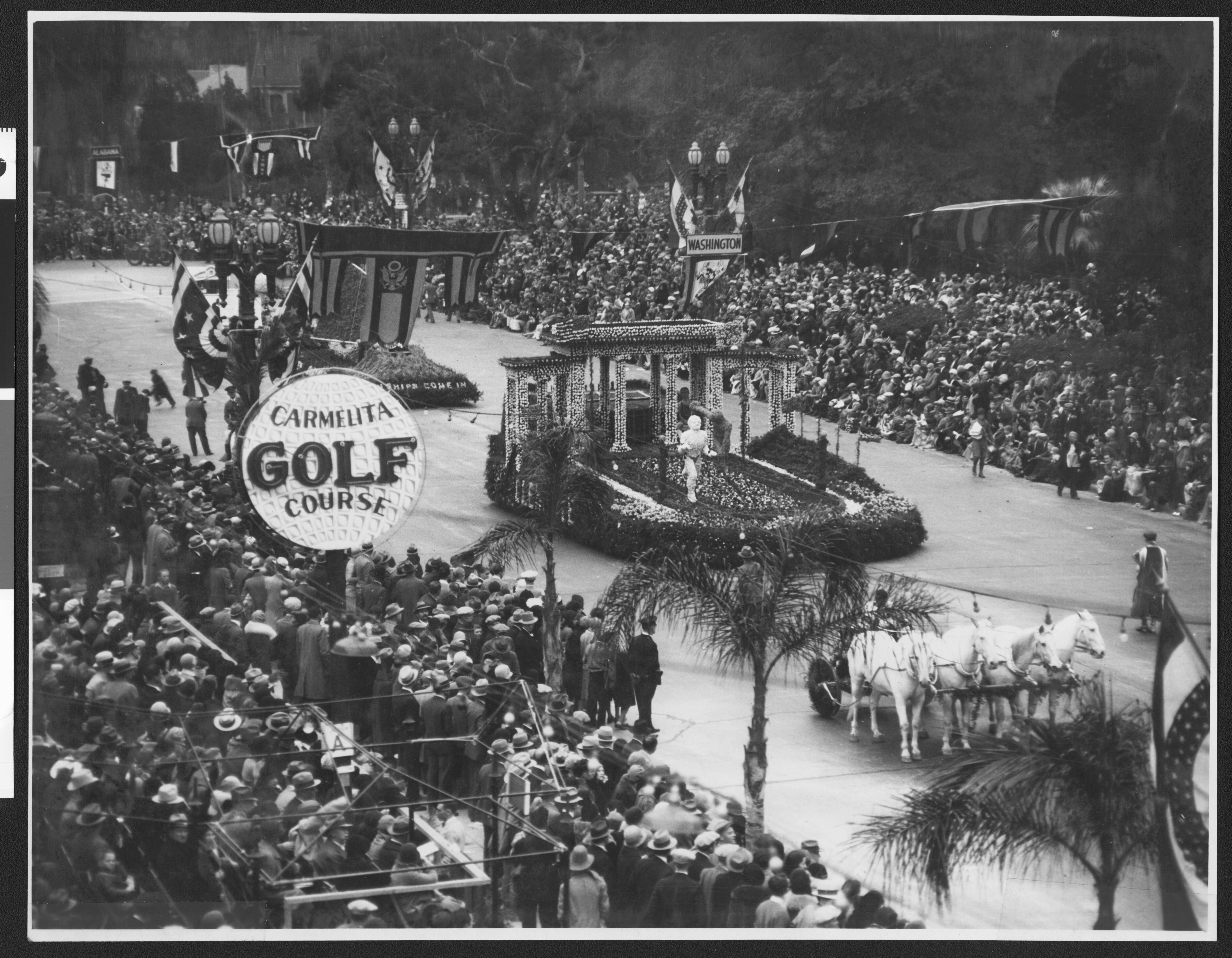Every year hundreds of thousands of people line the streets of Pasadena and millions others tune in worldwide to watch the spectacle of The Rose Parade. A new year’s day tradition that can trace it’s origin to the late 1800s.
The first parade was organized by The Valley Hunt Club on January 1st, 1890. Inspired by the abundance of fresh flowers found in the middle of winter, they wanted a way to brag about Pasadena’s charm and warm weather to those still living back East. Basically, what all of us here in Southern California still doing today.

As Professor Charles F. Holder said at one of the Club’s meetings, “In New York, people are buried in snow. Here our flowers are blooming and our oranges are about to bear. Let’s hold a festival to tell the world about our paradise.”
The first parade consisted of horse drawn carriages and bicycles decorated with flowers riding through Pasadena. The parade was followed by a wide variety of sporting events, including foot races, horse and donkey races, tug-of-war, and ring jousting. More than 2,000 people attended that first event.

Photo Credit: Courtesy of the Pasadena Public Library, Pasadena, CA
When the organizers were planning the 1893 celebration, they found themselves in a bit of a conundrum; New Year’s Day fell on a Sunday and all of the commotion from the parade and other festivities might scare the horses that would be tied outside the local churches and cause disruption to the services. They decided on a “Never on Sunday” rule and began a tradition of moving the festivities to the following day if New Year’s fell on a Sunday, something that’s happened 20 times.
By 1895 the event had become too large for the Valley Hunt Club to manage, so the Tournament of Roses Association was founded. The new association continued to expand the New Year’s Day festivities, adding a college football game in 1902 where the University of Michigan crushed Stanford 49-0 in the first iteration of what eventually would become the Rose Bowl.
The following decades resulted in more changes to the parade and events. In 1920 motor driven floats replaced the horse drawn carriages. The Rose Bowl game moved into its namesake stadium in 1923. The Tournament of Roses Association also found a new permanent home in 1959, when the Wrigley Mansion was gifted to the city of Pasadena to serve as its headquarters.

Photo Credit: University of Southern California. Libraries and California Historical Society
Obviously, the Rose Parade is an event that is full of traditions and one of my favorites is that every inch of a float must be covered with flowers or other natural materials like seeds, leaves, or bark. It’s only by getting up-close that you can truly appreciate the creativity and effort that goes into decorating the floats.
There’s 2 opportunities to admire the hard work and details that go into their creations: before the parade you can attend “Decorating Places” where you can watch as the decorators put the finishing touches on the floats. Or after the parade at “Float Fest,” where the floats are put on display for 2 days and you can admire the creativity and resourcefulness of the decorators as you walk amongst the floats. Afterwards they’re stripped down to their chassis and planning immediately begins for the next year’s festivities.

Planning an event like the Rose Parade is a massive undertaking and we’re fortunate that there’s people dedicated to keeping the festivities that started over 130 years ago alive.
References:
“Here’s How the Rose Parade Got Its Start” by Courtney Tompkins, Pasadena Star-News. December 13, 2015.
“Today’s Rodeo” by L.A. Times Staff. The L.A. Times, Jan 1, 1890.
Rose Parade History | Pasadena Tournament of Roses Website
“133rd Tournament of Roses Parade Restarts Beloved Tradition.” CBS News Los Angeles, January 1, 2022.
“Before the Floats: Carriages of the Rose Parade.” CNN News, January 1, 2020.
“Why the Rose Parade and Rose Bowl are on Jan. 2 in 2023” by Anissa Rivera. The Mercury News, December 14, 2022.

